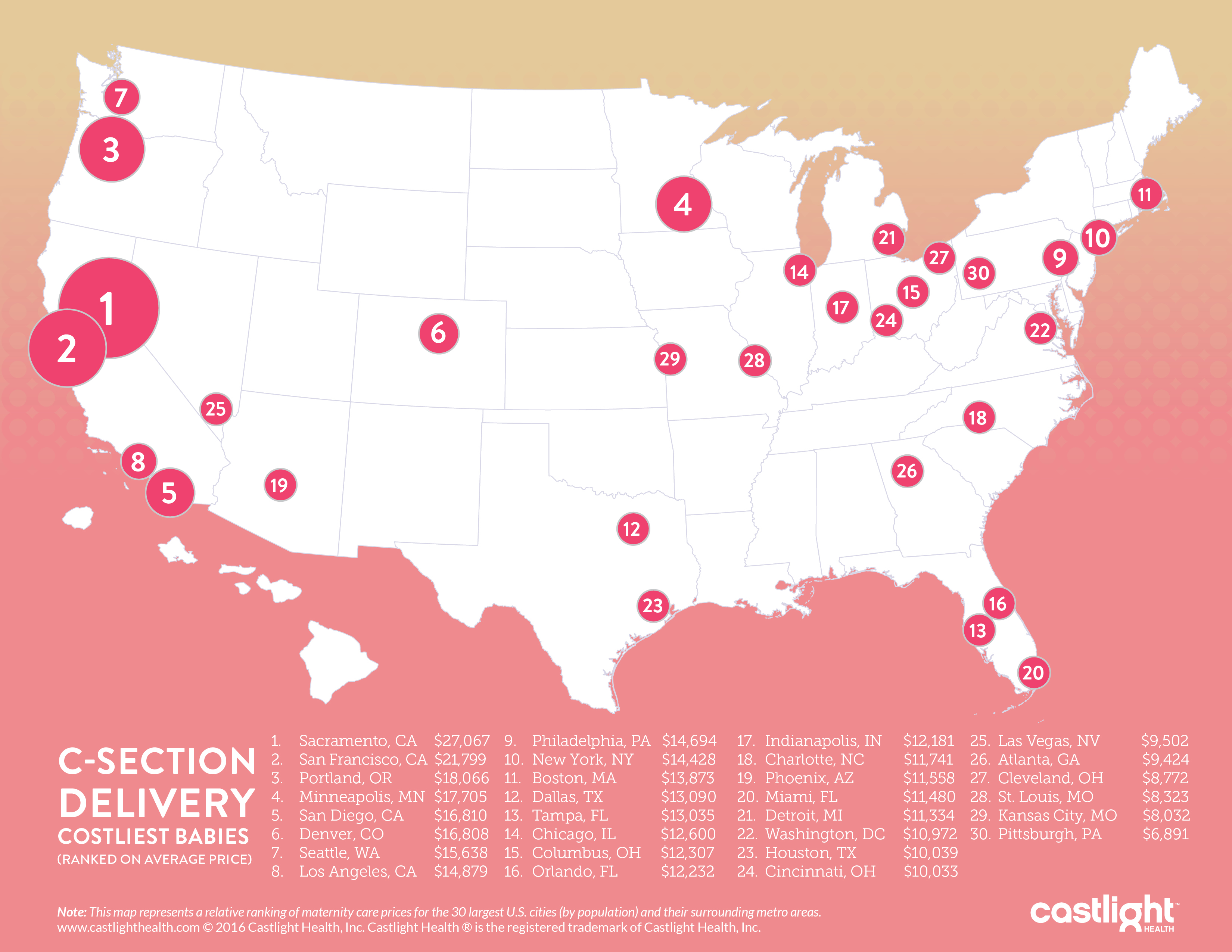Everyone knows that real estate is no bargain in Northern California. It turns out that giving birth ain’t cheap either.
New research on the cost of childbirth in the nation’s 30 largest metropolitan areas ranks Sacramento and San Francisco as the two most expensive for both vaginal delivery and cesarean sections.
Sacramento is No. 1; San Francisco, No. 2.
The study, based on private health insurance claims from this year and other data, shows the totals actually paid for childbirth by employees and employers. It was conducted by Castlight Health, a San Francisco-based health care information company that analyzes medical costs to help consumers and purchasers compare prices.
A vaginal delivery costs an average of $15,420 in the Sacramento area and $15,204 in San Francisco — nearly $4,000 more than the third-most expensive location, Minneapolis. In the least expensive metropolitan area, Kansas City, a vaginal delivery costs $6,075.
C-sections are even more expensive, costing an average of $27,067 in Sacramento — nearly four times as much as in Pittsburgh, the cheapest city. San Francisco had the second highest cost for C-sections, at $21,799. San Diego came in fifth at $16,810.
The data show that prices vary widely even within the most expensive regions. In San Francisco, for example, the cost for a Cesarean delivery ranged from $8,399 to $41,191 — a five-fold price difference. Patients, however, rarely know how much a procedure will cost until they receive the bill.


“It’s a black box when it comes to pricing in health care,” said Kristin Torres Mowat, a Castlight senior vice president. “There is not a rational explanation for this kind of variation for similar procedures in the same geography. It highlights how inefficient the health care market is.”
Mowat said the high costs in Northern California might have to do with the consolidation of providers in the market. Most obstetricians, for example, work for relatively few major medical systems, including Sutter Health and Dignity Health, which have been singled out recently for high prices. “The less choice and competition there is, the higher the pricing,” she said.
The data in the study did not reflect the quality of care relative to the cost, making it difficult to assess value. “As consumers, we assume that the highest cost is going to be the best quality, but that is not true in health care,” said Mowat.
Comparison shopping is key to making sure consumers get a good deal, but it can be challenging. Even when patients try to call around to their local hospitals to compare prices, the hospitals are rarely forthcoming, said Katy Kozhimannil, an associate professor at the University of Minnesota’s School of Public Health.
Getting information about health care costs is “next to impossible,” said Kozhimannil. And that makes it easier for players in the industry to make money, she said.
Kozhimannil noted that families and individuals are paying for a growing share of their medical care. “Increasingly, with high-deductible plans, women and families are on the hook for a greater part of the cost of childbirth,” she said.






